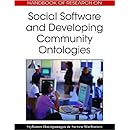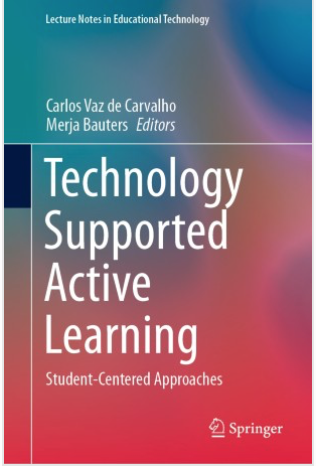
Using ‘social navigation’ and ‘participatory surveillance’ terms for co-creation and joint action
October 8, 2009Olga Levistova wants to deal in her master study the question: How does social surveillance become into participatory surveillance. Her investigations are related with our hybrid ecosystem studies in which we refer to certain swarming phenomena that take place as a result of something like social awareness and monitoring, social surveillance, and social navigation.
I started to wonder about the terminology, it seems some of these terms have an overlap and we need to think which is the right concept we are talking about.
Gary T. Marx (2005) wrote in the “Encyclopedia of Social Theory”:
Information boundaries and contests are found in all societies and beyond that in all living systems. Humans are curious and also seek to protect their informational borders. To survive, individuals and groups engage in, and guard against, surveillance.
Traditional surveillance often implied a non-cooperative relationship and a clear distinction between the object of surveillance and the person carrying it out. The new surveillance with its expanded forms of self-surveillance and cooperative surveillance, the easy distinction between agent and subject of surveillance can be blurred.
The new social surveillance can be defined as, “scrutiny through the use of technical means to extract or create personal or group data, whether from individuals or contexts”. The use of multiple senses and sources of data is an important characteristic of much of the new surveillance.
However, social surveillance has been detected in social software systems:
eg. Myspace and Facebook: Social Surveillance for the 21st Century
Christian Fuchs writes in his “Social Networking Sites and the Surveillance Society” about the rise of surveillance society.
He refers that Focault makes clear that surveillance is a repressive, coercive process:
Surveillance means that someone “is seen, but he does not see; he is the object of information, never a subject in communication” (Foucault 1977: 200).
Next Fuchs points that Giddens (1985) does not see surveillance as something entirely negative and dangerous, and argues that surveillance phenomena also enable modern organization and simplify human existence.
Further on, Fuchs refers to Anders Albrechtslund (2008) who argues that social networking sites show that surveillance is not necessarily disempowering, but is “something potentially empowering, subjectivity building and even playful”.
“Online social networking can also be empowering for the user, as the monitoring and registration facilitates new ways of constructing identity, meeting friends and colleagues as well as socializing with strangers. This changes the role of the user from passive to active, since surveillance in this context offers opportunities to take action, seek information and communicate. Online social networking therefore illustrates that surveillance – as a mutual, empowering and subjectivity building practice – is fundamentally social” (Albrechtslund 2008).
Participatory surveillance term is explained by Albrechtslund (2008) in Online social Networking as a participatory surveillance.
Albrechtslund refers that the term originates from Mark Poster and T.L. Taylor.
Poster argues that individuals are not just disciplined but take active part in their own surveillance even more by continuously contributing with information to databases. Taylor uses the concept to study collaborative play in the online computer game World of Warcraft.
However, Nicolas Nova and Paul Dourish have also used another term social navigation:
“ Social navigation is a term coined by Dourish and Chalmers (1994) that refers to situations in which a user’s navigation through an information space is guided and structured by the activities of others within that space.” (Nova and Ortelli, 2004).
The point is to find traces from other’s activities to help you performing the task you want to..
Alan J. Munro, Kristina Höök, and D. R. Benyon write in Social Navigation of Information space (1999):
Social navigation is a vibrant new field which examines how we navigate information spaces in ‘real’ and ‘virtual’ environments, how we orient and guide ourselves, and how we interact with others to find our way. This approach brings a new way of thinking about how we design information spaces, emphasising our need to collaborate with others, and follow the trails of their activities in these spaces.
Both in case of participatory surveillance and social navigation the focus seems on more how individual is benefiting if using the information available from other people’s action traces.
This is one, individual side of the phenomenon. Another side is collaboratively emergent action, artifacts etc. that may result from these monitoring behaviors – the system level phenomena
For example, swarming describes such non-coordinated aggregation behaviors, which become possible because of the signal traces left to the environment or read from other members in the system.
Question is, do we see such agglomeration behaviors in system as part of social surveillance or social navigation, as part of the means that INDIVIDUALS can use? Can we use term participatory surveillance or social navigation in agglomeration/global result context, or are we blurring the picture?
I believe that dynamic ontospace term can be used for the representation of our actions and meanings in social web.
Agglomeration of content or activities in ontospace, which makes them traceable uses semantic means. Visibility is often achieved by tags and mashups, pushing information to many spaces.
Paul Dourish and Matthew Chalmers distinguish between semantic navigation and social navigation:
[semantic navigation offers] the ability to explore and choose perspectives of view based on knowledge of the semantically-structured information.
…
In social navigation, movement from one item to another is provoked as an artifact of the activity of another or a group of others.
In 2008 Daniel Tunkelang wrote in his blog The Noisy channel:
Following Dourish and Chalmers, let us define social navigation as the ability to explore and choose perspectives of view based on social information. Social navigation, defined as above, offers users more than just the ability to be influenced by other people. It offers users transparency and control over the social lens. It allows us to think outside the black box.
Tunkelang uses the term perspective, that comes close to our own framework of taking perspectives in ontospace.
Taking perspectives, and becoming aware of and guided by collaborative perspectives seem for me the cue to noticing traces for participatory actions, collaboration, co-creation.
We assume in our paper about “Writing narratives as a swarm” with Mauri Kaipainen:
A perspective is a personal prioritization of shared ontospace dimensions. A perspective is by definition individual, but sharing perspectives determines niches. If noticing such prioritizations to be shared by more than one individual, these perspectives become community-defining, and facilitate some community actions more than the others, and contribute to the determination an abstract community-specific activity niche.
However, so far we have not used neither the social navigation nor participatory surveillance terms to signify that process. Should we use it?
Albrechtslund, Anders. (2008). Online Social Networking as Participatory Surveillance. First Monday 13 (3).
Foucault, Michel. 1977. Discipline and punish. New York: Vintage.
Giddens, Anthony. 1985. A contemporary critique of Historical Materialism. Vol. 2: The nation-state and violence. Cambridge: Polity Press.
Poster, M., 1990. The mode of information: Poststructuralism and social context. Chicago: University of Chicago Press,
T.L. Taylor, 2006. “Does WoW change everything? How a PvP server, multinational player base, and surveillance mod scene caused me pause,” Games & Culture, volume 1, number 4, pp. 318–337.
Posted in awareness, communities, hybrid ecology | Tagged participatory surveillance, social navigation, swarm |









HI Kai! Yes, that’s for sure we should use social navigation as well, because it seems it is really about the knowledge about participation in such environments and what we have tried in our experiment to give hints to others or “leave footprints on the snow”* as unintended social navigation.
I guess there in several talks where such theme is people are explaining the same concept but with different terms and metaphors… Seems it is because it is all knew. I should figure it out more..
* – Designing Social Navigation for a Virtual Community of Practice, Wen Xu, Karel Kreijns, and Jun Hu
What i discovered looking the terms is we need to separate phases of the process:
a) leaving traces of action in networks (artifacts, tags, web of connections in network, certain types of action in network)
b) monitoring others in networks (passive mode, no action follows) (social surveillance)
c) using the cues from other for making individual decisions (active mode)
– can happen by monitoring individuals and using these cues from networks to take action (social navigation)
– monitoring the system patterns by pulling out datasets, visualizations etc.
(semantic navigation, social information retrieval)
d) monitoring others and resulting in collaborative action that is not coordinated centrally (participatory surveillance, swarming)
Ecology of social search for learning resources
Vuorikari, Riina & Koper, Rob
Click to access vuorikari_koper_socialsearch.pdf